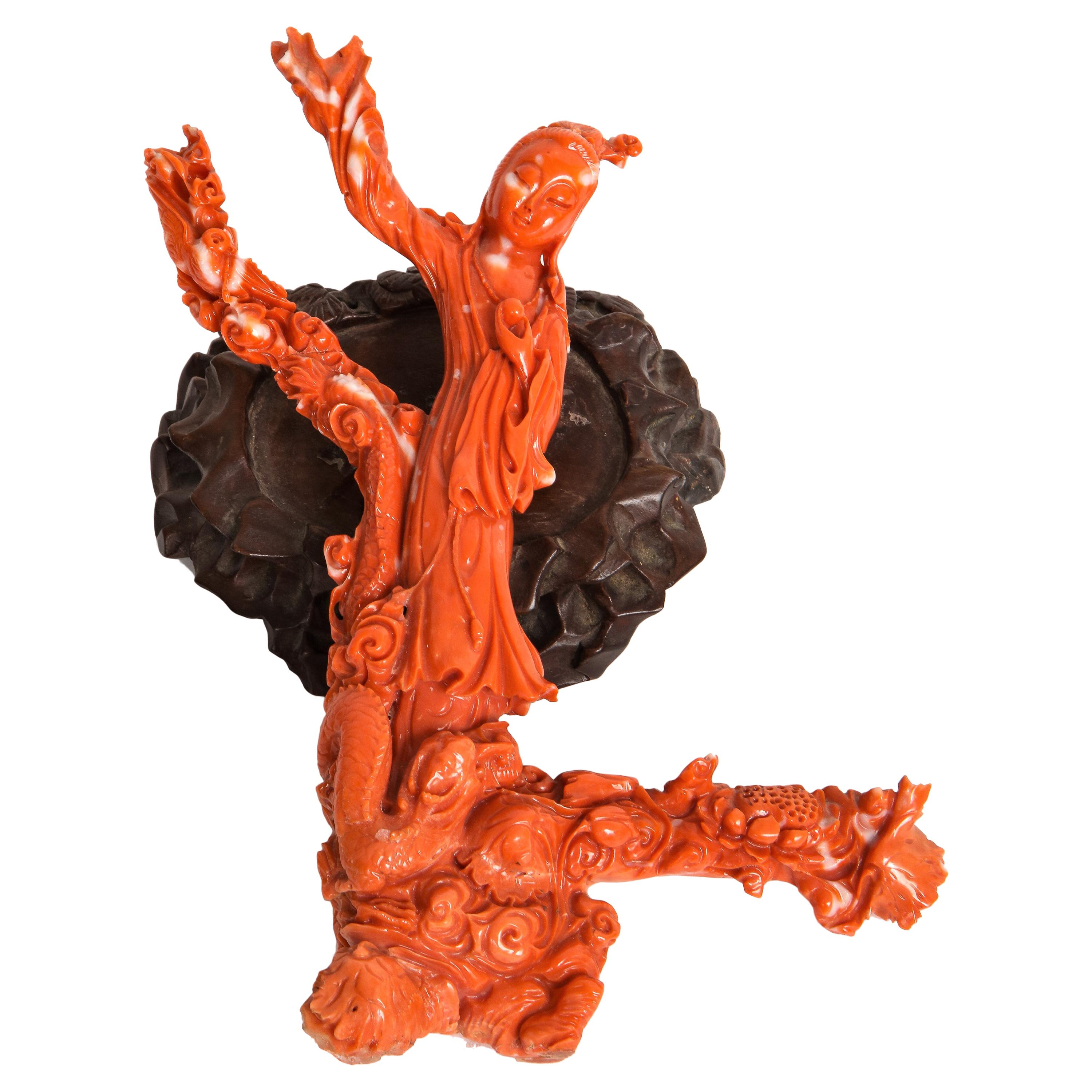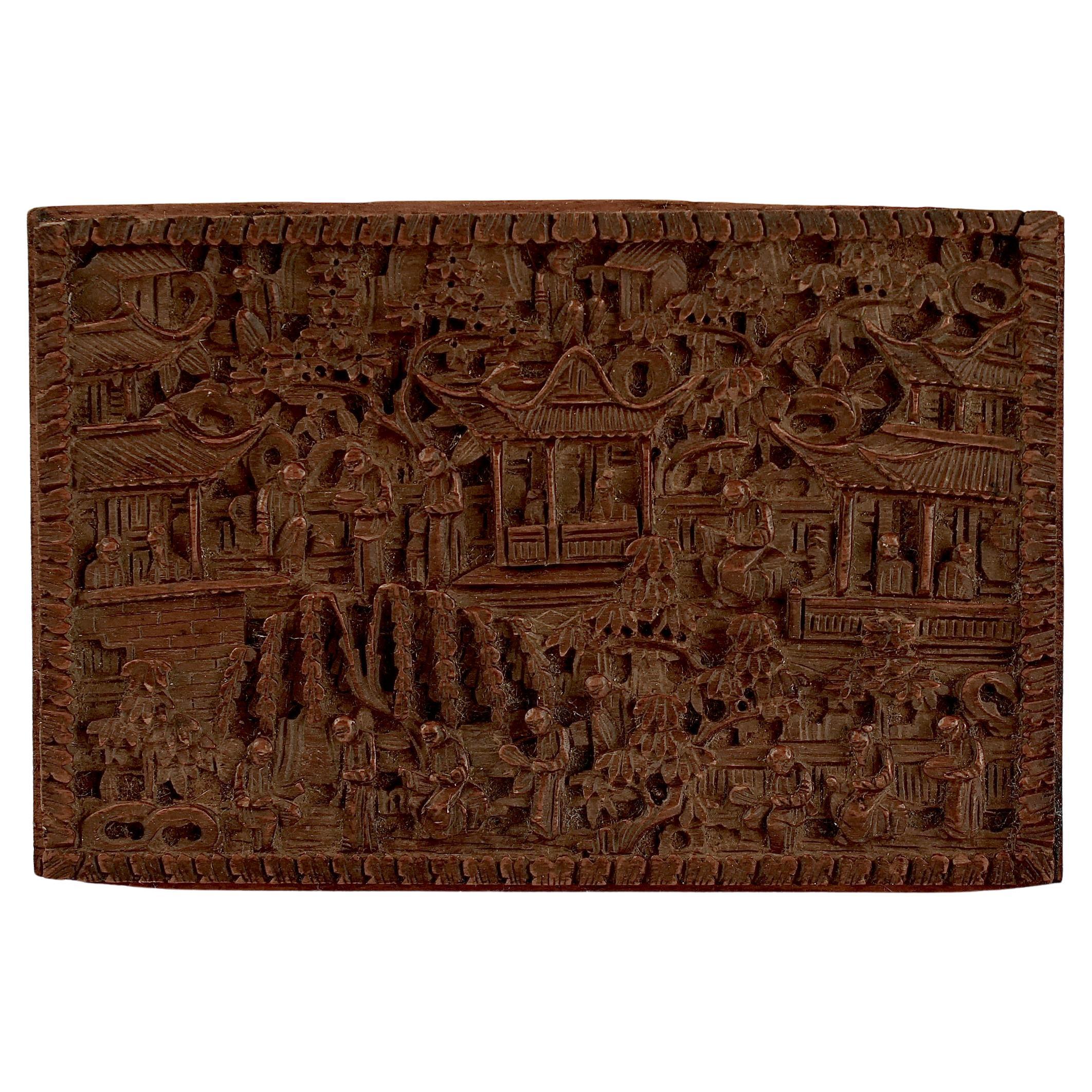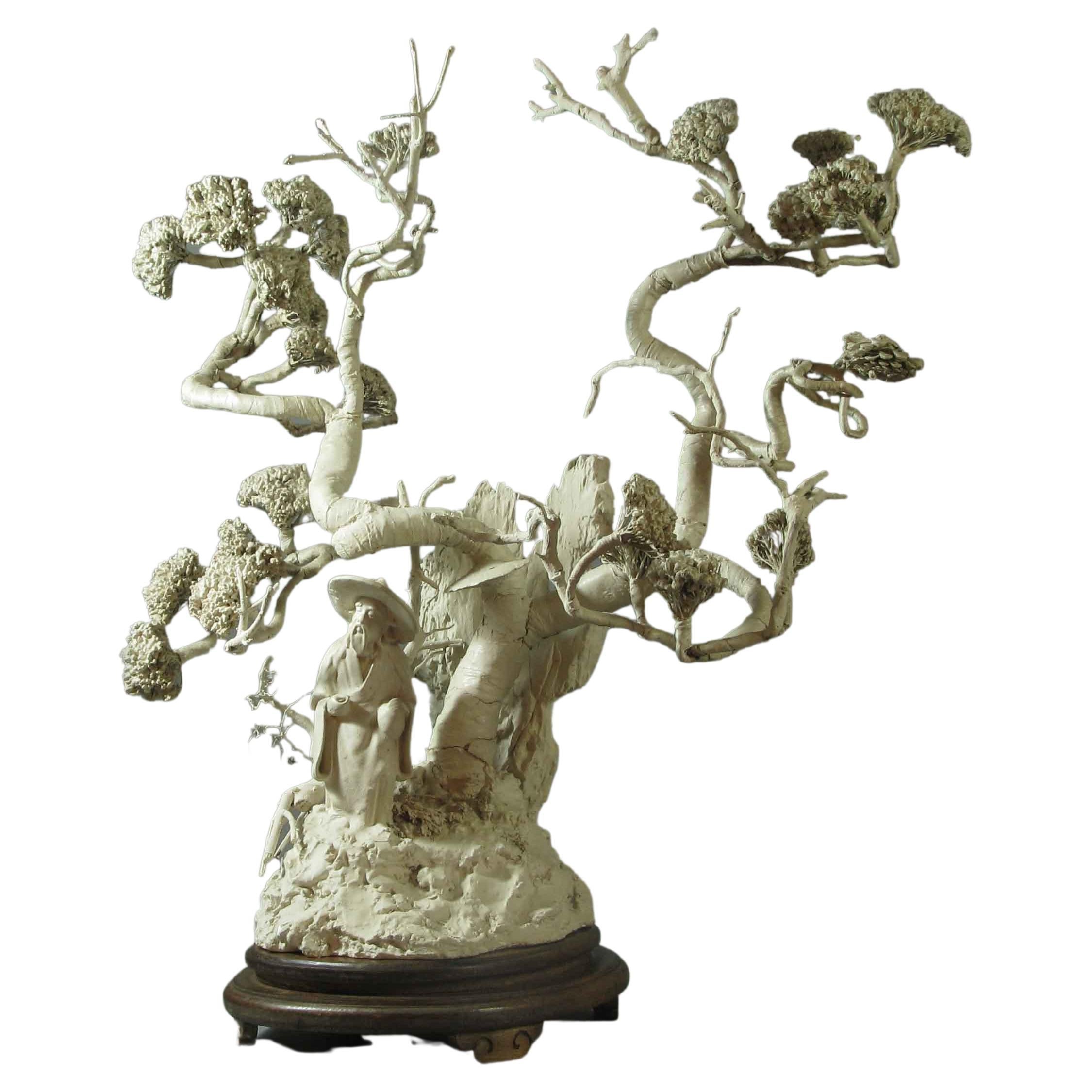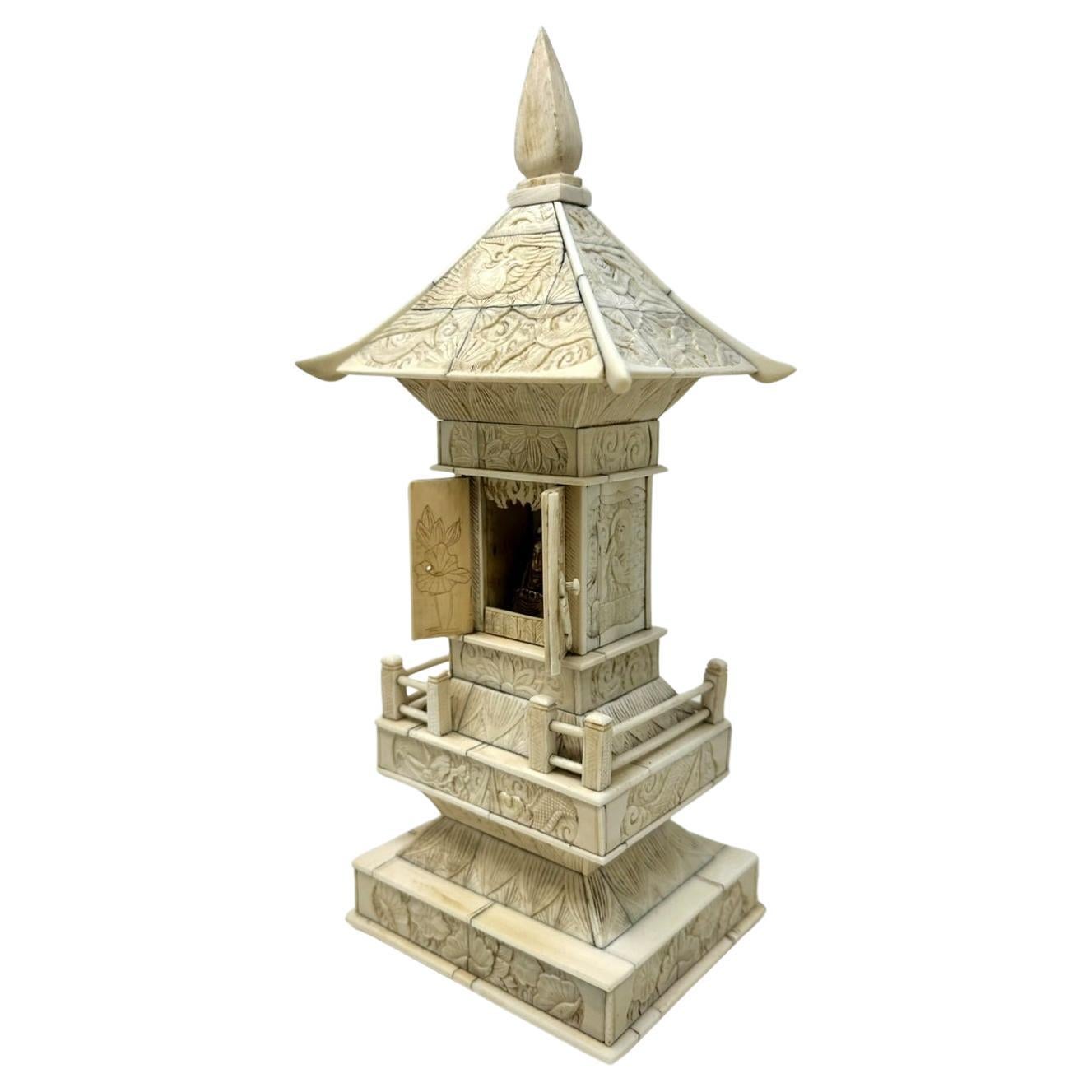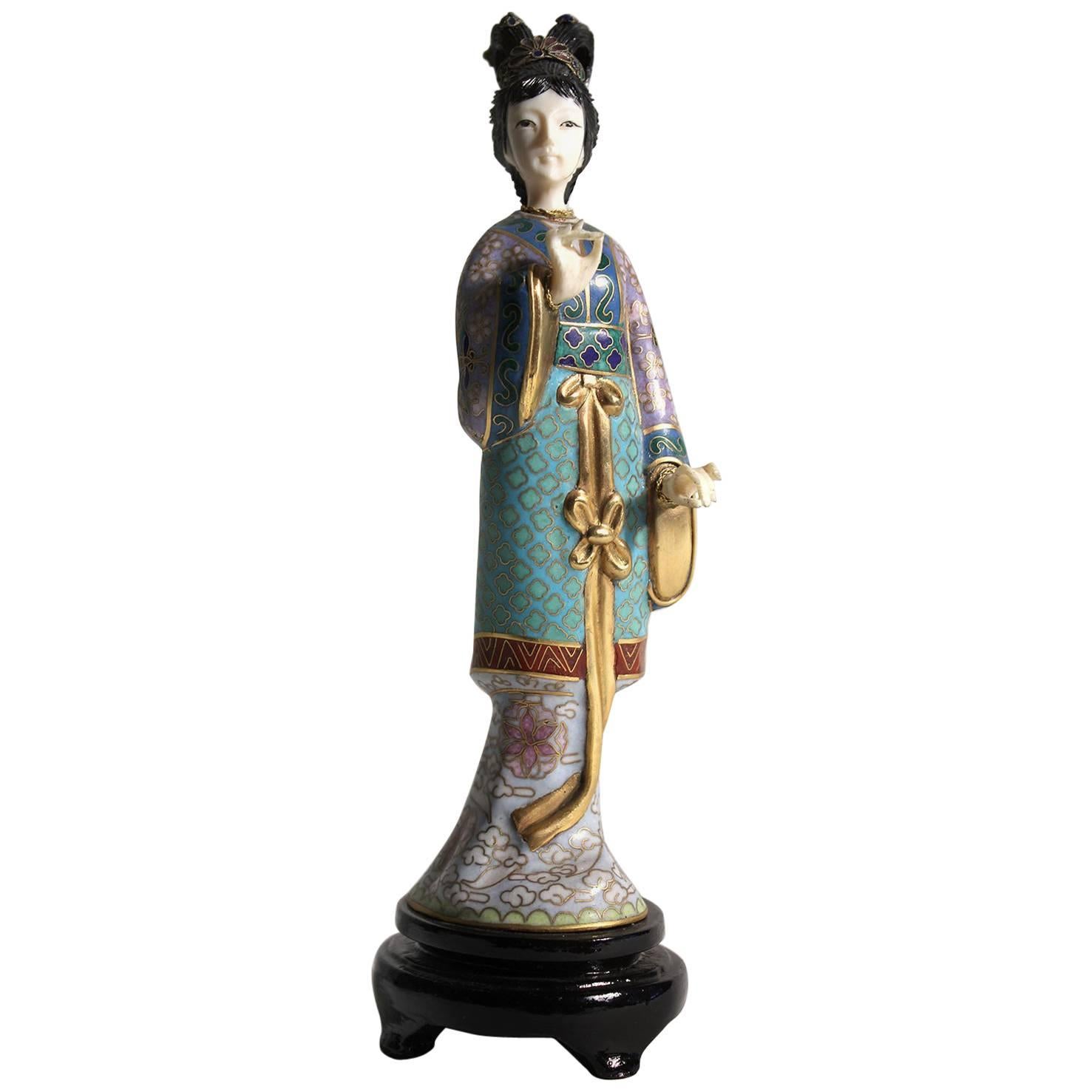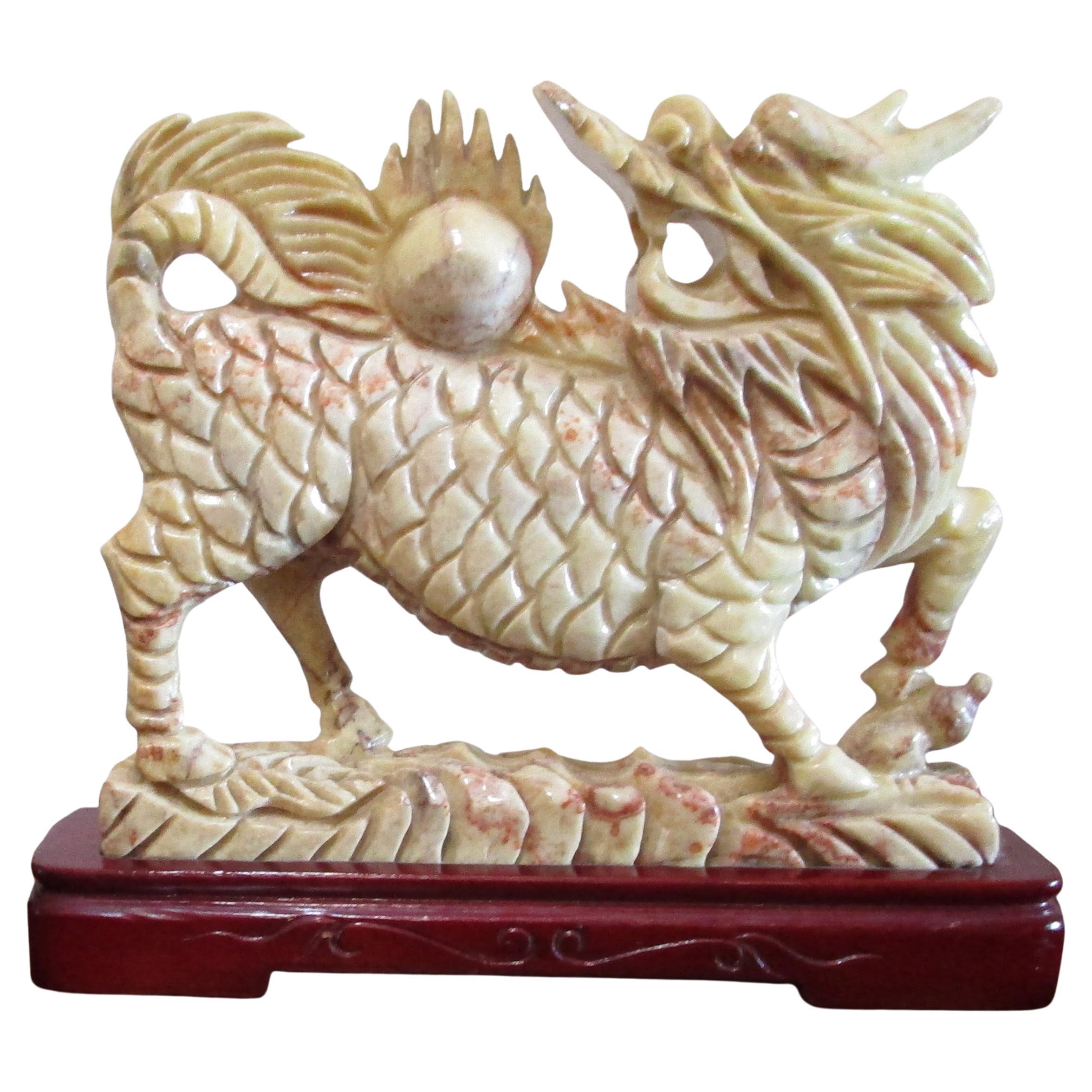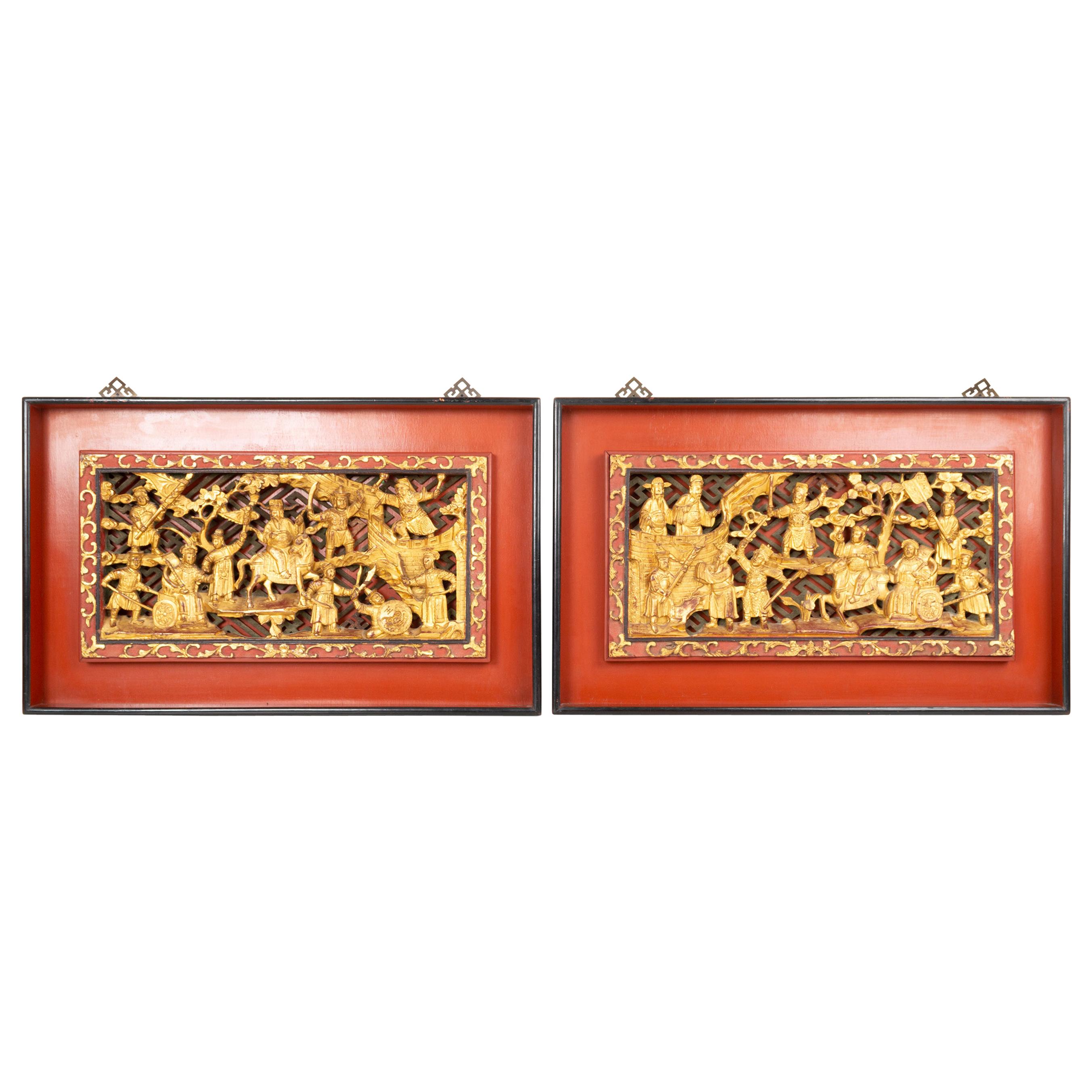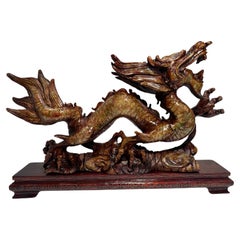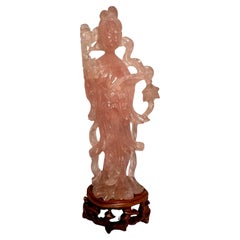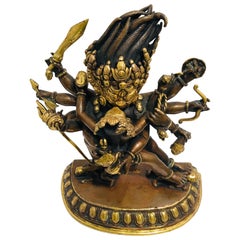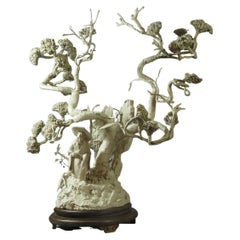
Chinese Carved Mottled Stone Birds and Flowers Sculpture on Rosewood Base
View Similar Items
Want more images or videos?
Request additional images or videos from the seller
1 of 18
Chinese Carved Mottled Stone Birds and Flowers Sculpture on Rosewood Base
About the Item
- Dimensions:Height: 10 in (25.4 cm)Width: 8.5 in (21.59 cm)Depth: 3.5 in (8.89 cm)
- Style:Chinese Export (In the Style Of)
- Materials and Techniques:
- Place of Origin:
- Period:
- Date of Manufacture:circa 1950s
- Condition:In excellent antique condition, with no losses. Bottom of base shows slight wear.
- Seller Location:Tustin, CA
- Reference Number:Seller: 0134-FSW1stDibs: LU4033315240891
About the Seller
5.0
Gold Seller
These expertly vetted sellers are highly rated and consistently exceed customer expectations.
1stDibs seller since 2018
160 sales on 1stDibs
Typical response time: 1 hour
More From This SellerView All
- Year of the Dragon Elaborate Hand Carved Stone Dragon Sculpture on Rosewood BaseLocated in Tustin, CAIntricately hand carved from a single block of richly variegated stone, this incredibly detailed and elaborate, Chinese sculpture is a true work of art. It features a dragon on a car...Category
Mid-20th Century Chinese Chinese Export Sculptures and Carvings
MaterialsStone, Carnelian
- Model of Chinese Beauty Pink Rose Quartz Goddess Quan Yin Hand Carved FigurineLocated in Tustin, CAExquisitely hand made and hand carved pink rose quartz figurine of the goddess Quan Yin. She is depicted holding a festoon of lotus blossoms and ...Category
Mid-20th Century Chinese Chinese Export Sculptures and Carvings
MaterialsRose Quartz
- Bronze Buffalo-Headed Deity Yamantaka with Consort Vajravetali 2-Piece StatueLocated in Tustin, CAA Sino-Tibetan bronze Yamantaka (Sanskrit: Vajrabhairav) with 3 buffalo-head faces and Medusa-like dreadlocks, and 10 arms, holding weapons and objects in every hand as he furiously ...Category
Mid-20th Century Tibetan Other Metalwork
MaterialsBronze
- Meiji Era circa 1900 Antique Japanese Bronze Sea Dragon 3-Arm CandelabraLocated in Tustin, CAMagnificent and powerful, fantastically sculptural, ferocious bronze Japanese writhing sea dragon candleholder is coiled around itself, with an uplifted head and a stylized plume of ...Category
Antique Late 19th Century Japanese Meiji Antiquities
MaterialsBronze
- Uniquely Modern Handmade Artisan Silver and Stones Wedding Cake Server SetLocated in Tustin, CAStunning for a modern wedding or party, beautifully shaped, high quality, bridal cake knife and cake server have been artfully upcycled with the embellishment of polished semi-precio...Category
Late 20th Century American Modern Sheffield and Silverplate
MaterialsStone, Silver Plate
$297 Sale Price / set40% Off - Original Bronze Puffin Bird Statue Entitled Showtime by Mary and Jacques RegatBy Mary RegatLocated in Tustin, CACaptivating, original polychrome bronze sculpture on a pivoting black marble base entitled "Showtime" by artist duo, Jacques and Mary Regat. Sculpture features a single Puffin bird standing on a rock with its' wings outspread. This is a limited edition bronze of only 100 pieces made. Signed by both artists on the rock, dated 2004 and numbered 81/100. A similar Puffin bronze...Category
21st Century and Contemporary American Other Animal Sculptures
MaterialsMarble, Bronze
You May Also Like
- Chinese Hand-Carved Coral Sculpture Guanyin and DragonLocated in New York, NYChinese Gwandian carved coral sculpture Guanyin and Dragon Very finely hand-carved. Circa Late 20th century, China Weight: With stand: 360.6 ...Category
Late 20th Century Chinese Sculptures and Carvings
MaterialsCoral
- Antique Carved Chinese Boxwood Plaque or InsertLocated in Philadelphia, PAA fine antique Chinese carved boxwood plaque or insert. Depicting a Chinese monastery scene. The border is decorated with small repeating ...Category
Early 20th Century Chinese Chinese Export Sculptures and Carvings
MaterialsBoxwood
- Large Chinoiserie Plaster Sculpture Chinese Figure under a Pine TreeLocated in Ottawa, OntarioA large chinoiserie plaster sculpture Chinese figure under a pine tree Probably early 20th century. Large, possibly unique sculpture of figure under a pine tree with a rock for...Category
Early 20th Century Chinese Chinese Export Sculptures and Carvings
MaterialsPlaster
- Antique Victorian Religious Chinese Export Ivory Bone Carved Pagoda SculptureLocated in Dublin, IrelandA Very Fine Quality Chinese Export Hand Carved Religous Pagoda of traditional architectural form and generous proportions, late Nineteenth Century. The overall structure beautifull...Category
Antique Late 19th Century Chinese Victorian More Asian Art, Objects and ...
MaterialsBone
- Antique Chinese Cloisonne Enameled Carved Guanyin Quan Yin Sculpture FigurineLocated in San Diego, CAStunning Chinese Guanyin cloisonné enameled figurine/sculpture. Comes with the original wood stand. Hands and head are carved. Stunning color...Category
Vintage 1920s Chinese Sculptures and Carvings
- A pair of 19th Century carved Foo temple dogs or Chinese guardian LionsLocated in London, GBChinese guardian lions, or imperial guardian lions, are a traditional Chinese architectural ornament. Typically made of stone, they are also known as stone lions or shishi (石獅; shíshī). They are known in colloquial English as lion dogs or foo dogs / fu dogs. The concept, which originated and became popular in Chinese Buddhism, features a pair of highly stylized lions—often one male with a ball and one female with a cub—which were thought to protect the building from harmful spiritual influences and harmful people that might be a threat. Used in imperial Chinese palaces and tombs, the lions subsequently spread to other parts of Asia including Japan (see komainu), Korea, Philippines, Tibet, Thailand, Myanmar, Vietnam, Sri Lanka, Nepal, Cambodia, Laos, and Malaysia. There has been extensive interaction between Chinese mythology and Confucianism, Taoism, and Buddhism. Elements of pre-Han dynasty mythology such as those in Classic of Mountains and Seas were adapted into these belief systems as they developed (in the case of Taoism), or were assimilated into Chinese culture (in the case of Buddhism). Elements from the teachings and beliefs of these systems became incorporated into Chinese mythology. For example, the Taoist belief of a spiritual Paradise became incorporated into mythology as the place where immortals and deities used to dwell. Sometimes mythological and religious ideas have become widespread across China's many regions and diverse ethnic societies. In other cases, beliefs are more limited to certain social groups, for example, the veneration of white stones by the Qiang. One mythological theme that has a long history and many variations involves a shamanic world view, for example in the cases of Mongolian shamanism among the Mongols, Hmong shamanism among the Miao people, and the shamanic beliefs of the Qing dynasty from 1643 to 1912, derived from the Manchus. Politically, mythology was often used to legitimize the dynasties of China, with the founding house of a dynasty claiming a divine descent. Mythology and philosophy. Further information: Chinese philosophy True mythology is distinguished from philosophical treatises and theories. Elaborations on the Wu Xing are not really part of mythology, although belief in five elements could appear. The Hundred Schools of Thought is a phrase suggesting the diversity of philosophical thought that developed during the Warring States of China. Then, and subsequently, philosophical movements had a complicated relationship with mythology. However, as far as they influence or are influenced by mythology, divides the philosophical camps into two rough halves, a Liberal group and a Conservative group. The liberal group being associated with the idea of individuality and change, for example as seen in the mythology of divination in China, such as the mythology of the dragon horse that delivered the eight bagua diagrams to Fu Xi, and methods of individual empowerment as seen in the Yi Jing (Book of Changes). The Liberal tendency is towards individual freedom, Daoism, and Nature. The relationship of the Conservative philosophies to mythology is seen in the legendary Nine Tripod Cauldrons, mythology about the emperors and central bureaucratic governance, Confucianism, written histories, ceremonial observances, subordination of the individual to the social groups of family and state, and a fixation on stability and enduring institutions. The distinction between the Liberal and Conservative is very general, but important in Chinese thought. Contradictions can be found in the details, however these are often traditional, such as the embrace by Confucius of the philosophical aspects of the Yi Jing, and the back-and-forth about the Mandate of Heaven wherein one dynasty ends and another begins based according to accounts (some of heavily mythological) where the Way of Heaven results in change, but then a new ethical stable dynasty becomes established. Examples of this include the stories of Yi Yin, Tang of Shang and Jie of Xia or the similar fantastic stories around Duke of Zhou and King Zhou of Shang. Mythology exists in relationship with other aspects of society and culture, such as ritual. Various rituals are explained by mythology. For example, the ritual burning of mortuary banknotes (Hell Money), lighting fireworks, and so on. A good example of the relationship of Chinese mythology and ritual is the Yubu, also known as the Steps or Paces of Yu. During the course of his activities in controlling the Great Flood, Yu was supposed to have so fatigued himself that he lost all the hair from his legs and developed a serious limp. Daoist practitioners sometimes incorporate a curiously choreographed pedal locomotion into various rituals. Mythology and practice, one explains the other: in these rituals, the sacred time of Yu merges with the sacral practice of the present. Various ideas about the nature of the earth, the universe, and their relationship to each other have historically existed as either a background or a focus of mythologies. One typical view is of a square earth separated from a round sky by sky pillars (mountains, trees, or undefined). Above the sky is the realm of Heaven, often viewed of as a vast area, with many inhabitants. Often the heavenly inhabitants are thought to be of an "as above so below" nature, their lives and social arrangements being parallel to those on earth, with a hierarchical government run by a supreme emperor, many palaces and lesser dwellings, a vast bureaucracy of many functions, clerks, guards, and servants. Below was a vast under ground land, also known as Diyu, Yellow Springs, Hell, and other terms. As time progressed, the idea of an underground land in which the souls of the departed were punished for their misdeeds during life became explicit, related to developments in Daoism and Buddhism. The underground world also came to be conceived of as inhabited by a vast bureaucracy, with kings, judges, torturers, conductors of souls, minor bureaucrats, recording secretaries, similar to the structure of society in the Middle Kingdom (earthly China). Chinese temple Dogs...Category
Antique 1860s Chinese Chinese Export Sculptures and Carvings
MaterialsHardwood
Recently Viewed
View AllMore Ways To Browse
Sculpture And Base
Sculpture On Base
Flower Base
Two Birds
Stone Flower
Rosewood Base
Sculpture Of Chinese
Rosewood Carved
Carved Rosewood Furniture
Furniture Based On Birds
Carved Stone Sculpture
Chinese Carved Sculptures
Two Birds Vintage
Stone Carving Sculptures
Hand Carved Stone Sculptures
Hand Carved Bird
Stone Birds
Birds On Branch

